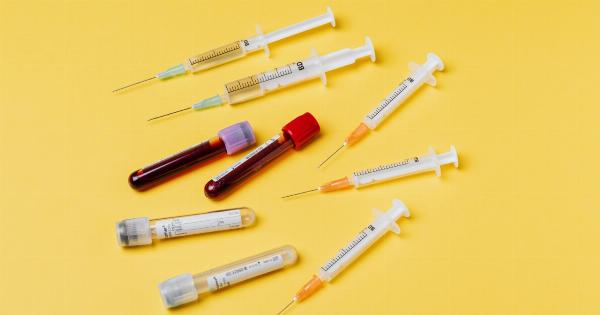High blood pressure, also known as hypertension, is a common condition that affects millions of people worldwide. It can lead to serious health problems, including heart disease, stroke, and kidney damage.
The good news is that hypertension can often be prevented or managed through lifestyle changes. In this article, we will discuss nine steps you can take to prevent hypertension and maintain a healthy blood pressure level. Along the way, we will provide helpful pictures to illustrate these steps.
1. Maintain a Healthy Weight
Being overweight or obese significantly increases your risk of developing hypertension. By maintaining a healthy weight, you can reduce this risk and improve your overall cardiovascular health.
A healthy weight can be achieved through a combination of regular physical activity and a balanced diet.

2. Follow a Balanced Diet
A diet that is low in saturated fats, cholesterol, and sodium is essential for managing and preventing hypertension. Opt for a diet rich in fruits, vegetables, whole grains, lean proteins, and healthy fats.
Some foods, such as garlic, leafy greens, and berries, have been shown to have blood pressure-lowering effects.

3. Reduce Sodium Intake
Excessive sodium consumption is a leading cause of high blood pressure. Limit your intake of processed and packaged foods, as they often contain high levels of sodium.
Instead, try flavoring your dishes with herbs, spices, and other salt-free seasonings to reduce your sodium intake.

4. Increase Potassium Intake
Increasing your potassium intake can help counteract the effects of sodium on blood pressure. Potassium-rich foods include bananas, oranges, spinach, avocados, and sweet potatoes.
Incorporate these foods into your diet to promote a healthy blood pressure level.

5. Engage in Regular Physical Activity
Regular physical activity is crucial for maintaining a healthy blood pressure level. Aim for at least 150 minutes of moderate-intensity exercise or 75 minutes of vigorous exercise per week.
Activities such as brisk walking, cycling, swimming, and dancing contribute to improved cardiovascular health.

6. Limit Alcohol Consumption
Drinking excessive amounts of alcohol can lead to high blood pressure. If you choose to drink, do so in moderation. The American Heart Association recommends a maximum of one drink per day for women and two drinks per day for men.

7. Quit Smoking
Smoking damages blood vessels and increases the risk of hypertension. Quitting smoking is one of the most significant steps you can take to improve your cardiovascular health.
If you need assistance, consult your healthcare provider for support and resources.

8. Manage Stress Levels
Chronic stress can contribute to high blood pressure. Find healthy ways to manage and reduce stress in your life. Engage in relaxation techniques such as meditation, deep breathing exercises, or engaging in hobbies that bring you joy and relaxation.

9. Get Regular Check-ups
Regular check-ups with your healthcare provider are crucial for monitoring your blood pressure and overall health. Your healthcare provider can provide guidance on managing hypertension and help you make necessary lifestyle modifications.

By following these nine steps, you can significantly reduce your risk of developing hypertension and improve your overall cardiovascular health. Remember, prevention is always better than cure. Take action today to safeguard your health for the future!.
























